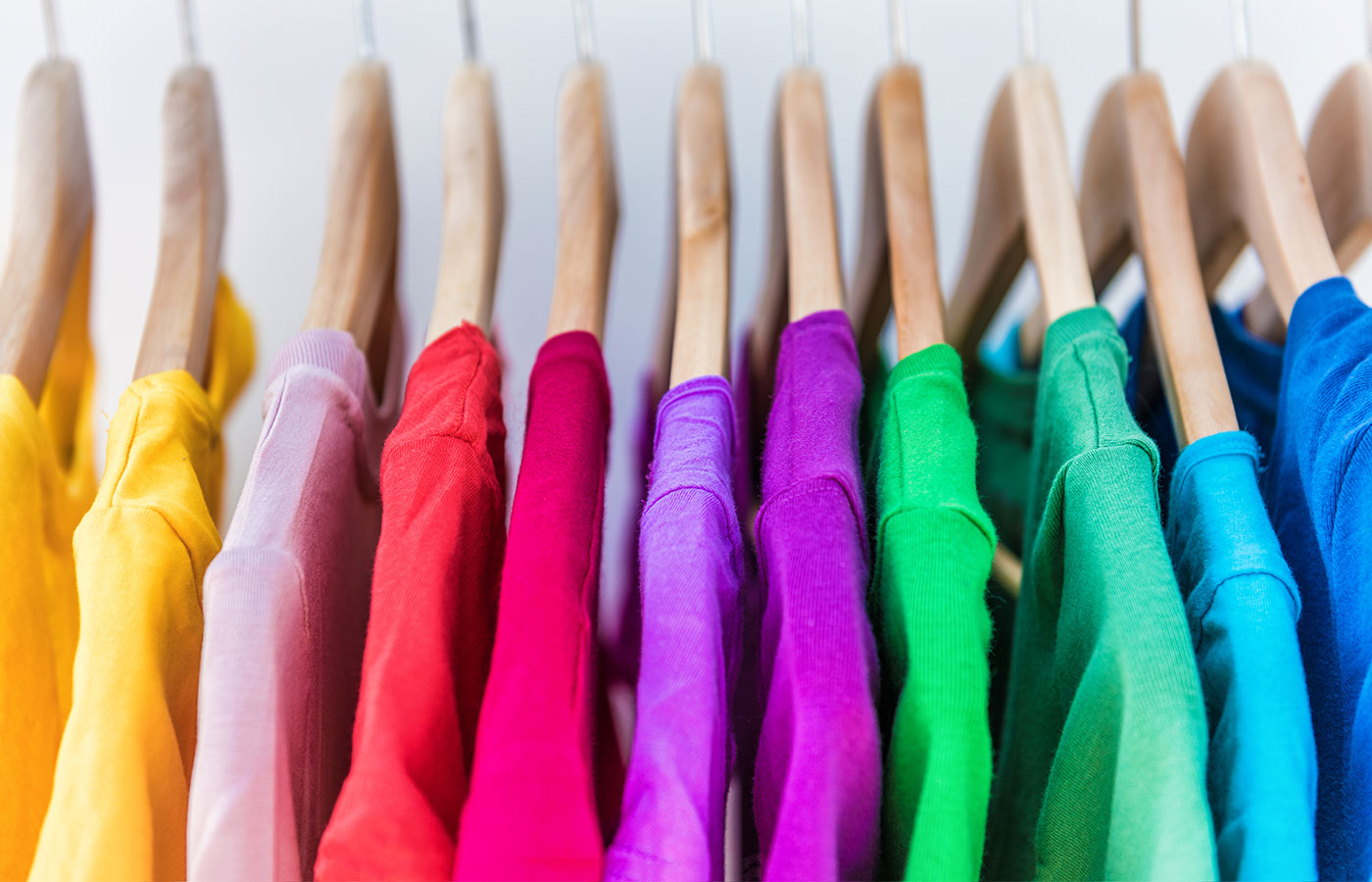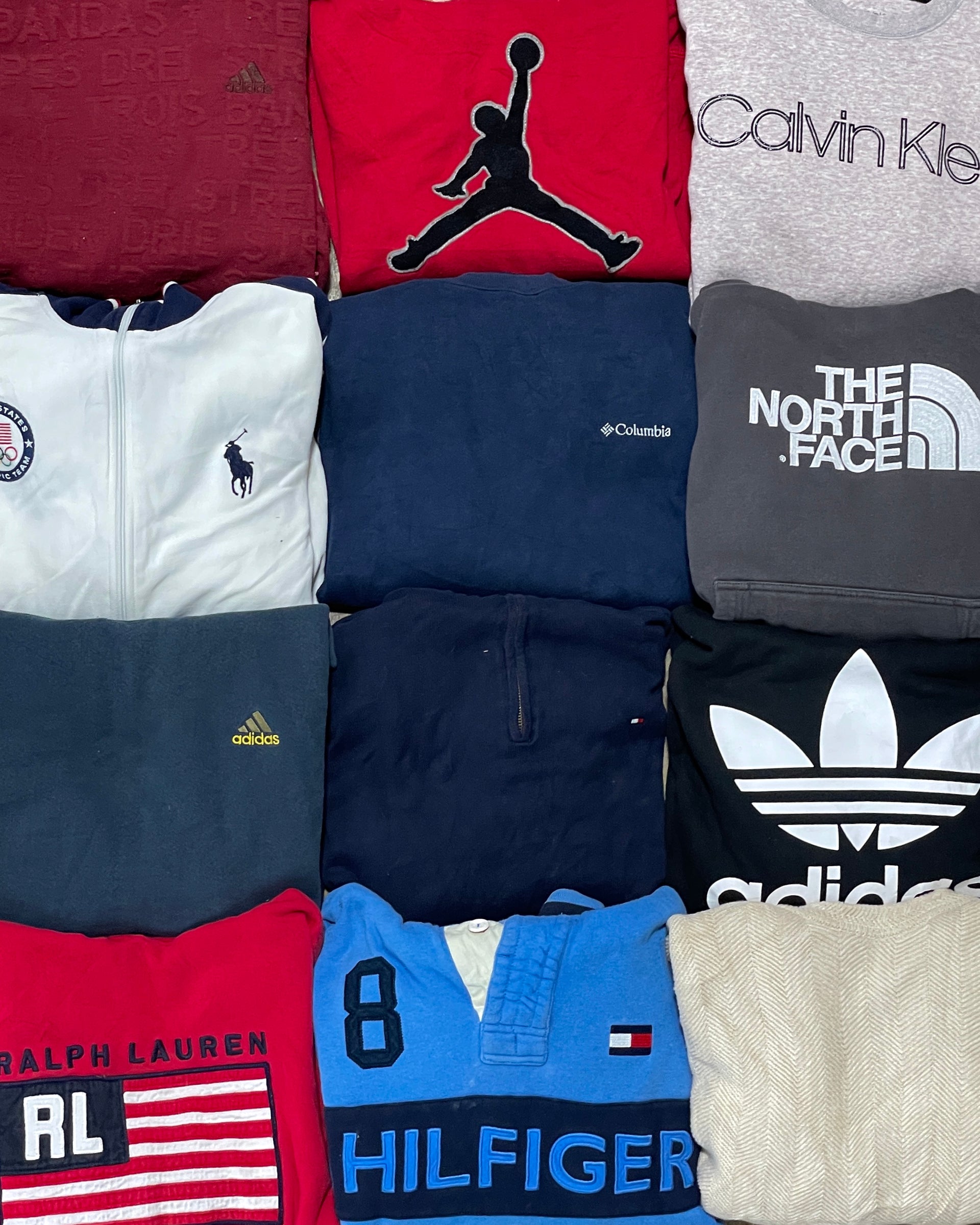Choosing Branded Clothing That Supports a Greener Wardrobe
Choosing Branded Clothing That Supports a Greener Wardrobe
Blog Article
Understanding Apparel: The Importance of Fabric Selections in Your Wardrobe
The choice of fabric in clothes plays a pivotal function in both aesthetic appeals and capability. Various materials supply varying degrees of longevity, comfort, and breathability, straight influencing the user's experience. Comprehending these nuances can boost one's wardrobe considerably. Yet, several forget exactly how these selections can affect not just personal style, however additionally sustainability. What material choices could redefine your closet and align it with both style and responsibility?
The Duty of Textile in Style and Functionality

Typical Material Kinds and Their Features
When selecting garments, recognizing the features of usual fabric types is essential for making educated options. Cotton, a widely-used all-natural fiber, is known for its soft qualities, breathability, and adaptability, making it appropriate for sportswear and everyday garments. Bed linen, another natural alternative, boasts superb moisture-wicking residential properties and an unique appearance, perfect for warm climates.Wool, usually preferred for its warmth and resilience, differs in excellence; merino wool is soft versus the skin, while coarser kinds are used for outerwear. Artificial fabrics like polyester and nylon offer resilience and resistance to creases, making them popular for activewear and travel garments. Lastly, blends, which integrate all-natural and synthetic fibers, can boost performance while keeping comfort. By recognizing these fabric attributes, people can pick clothing that straightens with their way of living and aesthetic preferences.
Breathability and Convenience: Picking the Right Fabrics for Different Environments
Choosing the appropriate fabrics for various climates can considerably improve convenience and total wearability. Breathable materials are crucial in hot environments, as they allow air flow and wetness dissipation. Fabrics such as cotton, linen, and moisture-wicking synthetics properly draw sweat away from the body, keeping the user cool and completely dry. Alternatively, in cooler climates, thicker fabrics like wool or fleece provide insulation while preserving breathability, guaranteeing warmth without overheating.Additionally, the choice of textile weight plays a vital role; light-weight materials are more effective for summertime, whereas heavier alternatives are suited for winter wear. Understanding the distinct residential properties of each material allows people to clothe properly for differing climate conditions. Eventually, picking comfy and breathable textiles tailored to certain environments can considerably improve day-to-day convenience and boost the overall experience of putting on clothes.
Toughness and Care: Just How Fabric Impacts Durability of Your Wardrobe
Picking the best materials can greatly impact the longevity and treatment requirements of a wardrobe. Fabrics such as cotton and polyester are known for their durability and convenience of maintenance, making them excellent for day-to-day wear. In contrast, delicate products like silk and lace call for more mindful handling and specialized cleansing methods, which can raise the moment and initiative required for care. Branded Clothing.Durability is also affected by the fabric's weave and coating; securely woven materials have a tendency to withstand damage far better than freely woven alternatives. Additionally, artificial blends often supply improved Continued resilience, combining the best qualities of several fibers.Understanding the treatment directions for each and every textile is necessary, as inappropriate drying or cleaning can cause premature wear. Eventually, picking resilient materials can cause a longer-lasting wardrobe, decreasing the frequency of substitutes and adding to an extra sustainable style option
The Influence of Fabric on Fit and Silhouette

Lasting Textile Selections: Making Eco-Friendly Decisions
The impact of material prolongs past fit and shape to encompass environmental aspects, triggering an expanding interest in sustainable textile options. Environmentally friendly materials, such as organic cotton, hemp, and Tencel, are acquiring traction among consumers who focus on sustainability in their closets. These materials are frequently created with less chemicals and water, decreasing their environmental footprint.Additionally, recycled materials, made from post-consumer waste, offer an ingenious remedy to the textile sector's contamination issue. Brands increasingly accept transparency in their sourcing techniques, enabling customers to make enlightened choices concerning their purchases.Choosing lasting fabrics not only supports ethical methods yet also encourages the fashion business to embrace more liable production methods. As awareness of ecological issues rises, individuals are prompted to assess the long-lasting influence of their fabric choices, promoting a movement in the direction of an extra eco aware and sustainable approach to style.
Elevating Style: Exactly How Fabric Can Change an Attire
While numerous may concentrate on shade and cut when picking an outfit, the option of fabric plays a necessary duty in raising design and boosting total appearance. Various materials communicate distinct moods and messages; as an example, silk exhibits luxury and refinement, while jeans supplies a casual, unwinded vibe. The structure and drape of a fabric can considerably alter the shape, with organized textiles offering a polished appearance and softer ones creating a more fluid, unwinded aesthetic.Moreover, the weight of the textile influences wearability across periods. Lightweight textiles like bed linen and cotton are perfect for summer, while heavier products such as woollen and velvet offer heat and elegance in cooler months. Understanding textile properties, such as breathability and stretch, likewise equips individuals to make informed options that enhance convenience without jeopardizing style. Ultimately, the ideal textile can transform an outfit from common to amazing, making it an essential consideration in any closet.
Often Asked Concerns
Exactly how Do I Determine the Textile Web Content of My Clothing?
To identify fabric web content, one can take a look at care labels, conduct shed examinations for fiber identification, or get in touch with fabric examples. These approaches aid differentiate materials, making sure educated selections for apparel treatment and upkeep in day-to-day wear.
Can Fabric Selection Affect My State Of Mind or Self-confidence?
Material option can greatly affect a person's state of mind and self-confidence. Branded Clothing. Specific products may stimulate feelings of convenience or elegance, while others can really feel restrictive or uncomplimentary, ultimately affecting self-perception and psychological well-being throughout the day
What Fabrics Are Ideal for Delicate Skin?
For people with delicate skin, natural textiles like linen, bamboo, and cotton are often recommended. These products are breathable, hypoallergenic, and less likely to trigger irritation, making them ideal choices for comfort and skin wellness.
How Do I Properly Wash and Take Care Of Different Fabrics?
To effectively care and wash for various fabrics, one need to take into consideration each material's particular requirements, including temperature level setups, detergents, and drying techniques, guaranteeing long life and anonymous keeping the material's original high qualities for suitable use.
Exist Particular Fabrics for Athletic or Performance Wear?
Sports or performance wear frequently utilizes materials such as spandex, polyester, and nylon. These products are made for moisture-wicking, breathability, and versatility, boosting motion and convenience throughout physical tasks while providing resilience and support. On the other hand, in colder environments, thicker fabrics like woollen or fleece give insulation while retaining breathability, ensuring warmth without overheating.Additionally, the selection of material weight plays an essential role; light-weight textiles are better for summertime, whereas heavier options are fit for winter months wear. In contrast, delicate materials like silk and shoelace require even more cautious handling and specialized cleansing methods, her latest blog which can boost the time and initiative needed for care.Durability is also influenced by the textile's weave and coating; firmly woven materials often tend to resist wear and tear much better than loosely woven alternatives. In comparison, stiff fabrics can limit motion but offer a timeless, refined look.Moreover, the thickness and appearance of the fabric can influence the visual perception of body form. The influence of material expands beyond fit and silhouette to incorporate environmental aspects, prompting a growing interest in sustainable material options. The structure and drape of a textile can drastically modify the silhouette, with structured materials providing a refined appearance and softer ones developing a much more fluid, loosened up aesthetic.Moreover, the weight of the material influences wearability throughout seasons.
Report this page